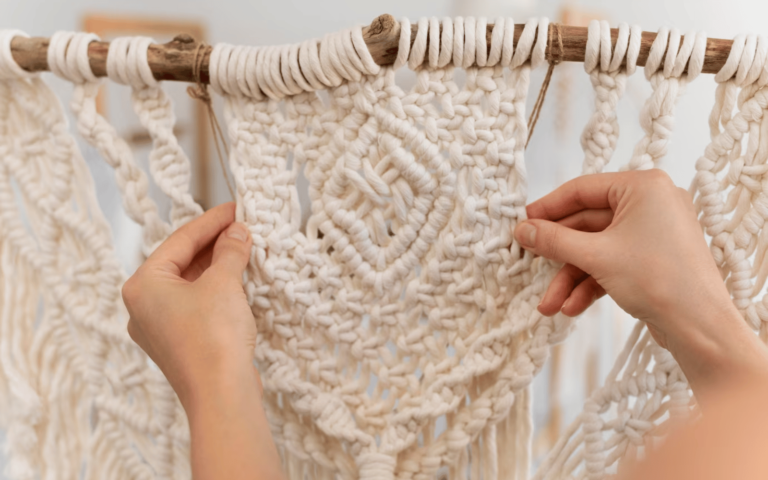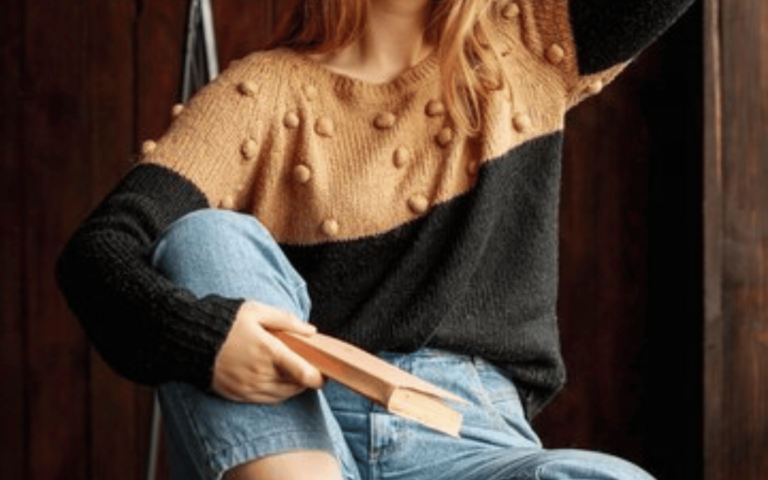Upcycled Craftsmanship – A New Journey into Sustainable Creativity
Upcycled craftsmanship represents the innovative process of transforming discarded or unused materials into valuable, often artistic, products. This concept has gained significant traction as both an environmental initiative and a creative movement. Rooted in the idea of sustainability, upcycling breathes new life into items that might otherwise contribute to waste. This approach not only reduces the burden on landfills but also fosters creativity, offering a new perspective on the potential of everyday objects. The origin of upcycled craftsmanship lies in the growing awareness of environmental issues and the increasing need for sustainable practices. Unlike recycling, which breaks down materials to create something new, upcycling creatively repurposes items without degrading their original form. This practice has a rich history in various cultures, where resourcefulness was key to survival and sustainability.
In recent years, upcycled craftsmanship has evolved beyond necessity into a form of artistic expression. Artists and designers globally are adopting this practice, creating everything from high-fashion pieces to functional home decor. The popularity of upcycling is not just a trend; it is a response to the global call for more sustainable living practices. The scope of items involved in upcycled craftsmanship is vast and diverse. From vintage clothing restorations to repurposed furniture, and from creative home accessories to unique pieces of art, the realm of upcycling is limited only by one’s imagination. This transformation of materials challenges our perceptions of value and utility, inviting us to see the hidden potential in the ordinary.
The Environmental Impact of Upcycled Craftsmanship
Upcycled craftsmanship plays a pivotal role in environmental conservation. By reusing materials, upcycling reduces the strain on natural resources, minimizes industrial waste, and cuts down on the energy consumption typically associated with manufacturing new products. This sustainable approach aligns with the goals of reducing the global carbon footprint and combating climate change. The environmental benefits of upcycling are significant. Each upcycled item represents a reduction in waste destined for landfills. This waste reduction is critical, considering the increasing amount of consumer waste generated annually. By repurposing materials, upcycling also decreases the demand for new raw materials, thus conserving natural resources and preserving ecosystems.
Upcycling also contributes to reducing pollution. The production of new materials often involves processes that release harmful emissions into the air and water. By reusing existing materials, upcycling circumvents these pollutive processes. Additionally, upcycling often involves local materials and labor, reducing the carbon footprint associated with transportation. In the broader sense, the practice of upcycling fosters a culture of environmental awareness and responsibility. It encourages individuals and communities to rethink their consumption habits, opting for sustainable alternatives. This shift in mindset is for the long-term Vitality of our planet, making upcycling an essential practice in the quest for environmental sustainability.
The Art of Upcycled Craftsmanship in Fashion
The fashion industry, notorious for its environmental impact, has seen a significant shift towards sustainability through upcycled craftsmanship. Designers and brands are turning to upcycling as a means to reduce waste and create unique, eco-friendly fashion statements. These upcycled pieces range from casual wear to high-end fashion, each imbued with a story of transformation and sustainability. Leading the way in upcycled fashion are innovative designers who view discarded materials as a canvas for creativity. They source materials from various places – vintage stores, second-hand shops, and even waste bins – to create fashion that is not only stylish but also environmentally conscious. These designers are redefining fashion norms, challenging the industry’s “fast fashion” model, and proving that style and sustainability can coexist.
Upcycled fashion is not just about environmental responsibility; it’s also about uniqueness and personal expression. Each upcycled garment is one-of-a-kind, reflecting the individuality of the wearer. This uniqueness is a stark contrast to mass-produced clothing and appeals to those seeking a distinctive style. Upcycled fashion tells a story – a story of past materials given a new lease on life. The impact of upcycled fashion extends beyond individual style. It is a movement, a statement about the potential of sustainable practices in the fashion industry. As more consumers become aware of the environmental impacts of their clothing choices, the demand for upcycled fashion grows. This trend is not just a passing fad but a step towards a more sustainable and environmentally responsible fashion industry.
Upcycled Craftsmanship in Home Decor
Upcycled craftsmanship has made a significant mark in the realm of home decor, offering a sustainable and creative solution to revamping living spaces. From furniture to decorative items, upcycled pieces add character and uniqueness to any home. These items, crafted from repurposed materials, range from rustic to modern, fitting a variety of interior design styles. One of the appeals of upcycled home decor is its ability to tell a story. Each piece carries a history – whether it’s a coffee table made from reclaimed wood or a lamp crafted from an old camera. This history adds depth and personality to home decor, making each piece more than just a functional item but a conversation starter. DIY enthusiasts are increasingly drawn to upcycling for home decor. The process of transforming an old item into something new and beautiful is not only rewarding but also allows for personalization. Upcycling enables homeowners to create decor that reflects their style and taste, something that off-the-shelf products rarely offer. In addition to its aesthetic appeal, upcycled home decor is an eco-friendly choice. By choosing upcycled items, consumers reduce waste and contribute to a more sustainable lifestyle. This choice is particularly impactful in the home decor industry, where trends can lead to a high turnover of items. Upcycled decor provides a sustainable alternative, reducing the environmental impact of home furnishing.
Creative Techniques in Upcycled Craftsmanship
Upcycled craftsmanship is a testament to human creativity, showcasing how innovative techniques can transform discarded items into valuable products. These techniques vary widely, depending on the materials and the desired outcome. Common approaches include repurposing, refurbishing, and reinventing – each technique breathing new life into old items. Repurposing involves finding a new use for an item without significantly altering its form. An example is using old mason jars as plant holders or turning an old ladder into a bookshelf. This technique is about seeing the potential in objects for uses other than what they were originally intended for.
Refurbishing is about restoring items to their former glory. This often involves repair work and aesthetic enhancements. For instance, an old piece of furniture might be sanded down, painted, and varnished to give it a fresh, new look. Refurbishing not only Preserves items from being discarded but also preserves a piece of history. Reinventing is perhaps maximum creative of the techniques, involving significant alterations to create something entirely new. This could mean turning old tires into ottomans or transforming broken ceramics into mosaic art. Reinventing requires a vision to see beyond the current state of an item and imagine what it could become. Each of these techniques requires a combination of creativity, skill, and a deep appreciation for the potential of materials. They represent the essence of upcycled craftsmanship – the ability to create value and beauty from what was once considered waste.
Sourcing Materials for Upcycled Craftsmanship
The success of an upcycled project often starts with the right materials. Sourcing materials for upcycling requires a keen eye and a creative mind. Many upcyclers turn to thrift stores, garage sales, and even their own homes to find materials that can be transformed. The key is to look beyond the current state of an item and envision its potential. Sustainable sourcing is a aspect of upcycled craftsmanship. It involves choosing materials that have a minimal environmental footprint. This could mean opting for natural over synthetic materials or selecting items that require less energy to transform. Sustainable sourcing not only enhances the eco-friendliness of the project but also adds to the narrative of the upcycled piece.
Common household items often provide a treasure trove of materials for upcycling. Old clothing, furniture, containers, and even broken electronics can be repurposed into something new and useful. The challenge is to view these items not as trash but as raw materials for creative projects. For those new to upcycling, starting small is advisable. Simple projects like turning a t-shirt into a tote bag or a tin can into a pen holder can be great starting points. These projects require minimal materials and tools, making them accessible to beginners. As skills and confidence grow, upcyclers can take on more complex projects, sourcing a wider range of materials.
Upcycled Craftsmanship in Accessories
The world of fashion accessories has embraced upcycled craftsmanship, offering a sustainable alternative to mass-produced items. Upcycled accessories range from jewelry made from reclaimed metals and stones to bags crafted from old textiles. These accessories are not just fashion statements; they are symbols of environmental responsibility and creative expression. Upcycled jewelry is a popular category, with artisans creating unique pieces from materials like vintage beads, watch parts, and even electronic components. The beauty of upcycled jewelry lies in its uniqueness – each piece tells its own story and stands out from traditional jewelry.
Handbags and clutches see a new life in upcycled craftsmanship. Designers use materials like old leather jackets, denim jeans, and fabric remnants to create fashionable and functional bags. The upcycling process often adds interesting textures and patterns, making each bag a one-of-a-kind accessory. Hats and other wearable accessories also benefit from upcycling. Old hats can be embellished with repurposed materials like brooches and ribbons, while scarves can be transformed into stylish headbands. These upcycled items not only add a unique touch to outfits but also demonstrate a commitment to sustainable fashion. In the realm of accessories, upcycled craftsmanship offers endless possibilities. It allows designers and consumers to make a positive environmental impact while enjoying the creativity and uniqueness that comes with upcycled products.
The Business of Upcycled Craftsmanship
Upcycled craftsmanship has not only sparked creativity but also fueled new business opportunities. Entrepreneurs and artisans are tapping into the growing demand for sustainable products, creating businesses around upcycled goods. These businesses range from small, local workshops to larger companies, all united by the mission of turning waste into wonder. The market for upcycled goods is driven by consumers who are increasingly conscious of their environmental impact. These consumers are looking for products that align with their values – products that are not only functional and aesthetically pleasing but also sustainable. This consumer shift has created a niche market for upcycled goods, offering a profitable avenue for businesses.
Starting a business in upcycled craftsmanship requires more than just creative skills. It involves understanding the market, identifying the target audience, and developing a unique brand identity. Entrepreneurs must also navigate the logistical aspects of sourcing materials and producing goods in an environmentally responsible manner. For those looking to enter the upcycled business space, networking and collaboration are key. Joining communities of upcyclers, participating in craft fairs, and leveraging social media can help in building a customer base and brand recognition. The success of an upcycled business lies not just in the quality of the products but also in the story they tell – a story of creativity, sustainability, and positive change.
Community and Upcycled Craftsmanship
The upcycling movement is deeply rooted in community. It brings together individuals who share a passion for creativity and environmental stewardship. Community-driven upcycling projects serve as platforms for collaboration, skill-sharing, and awareness-raising about sustainable practices. Local community centers, schools, and environmental groups often initiate upcycling projects. These projects can range from community garden initiatives using upcycled materials to workshops teaching upcycling techniques. Participating in these projects offers a sense of belonging and contributes to a greater cause – reducing waste and promoting sustainability.
Upcycling also fosters a culture of sharing and learning. Experienced upcyclers often share their knowledge and skills with beginners, helping to grow the community. This sharing of knowledge strengthens the community and ensures the continuation and evolution of upcycling practices. Online communities have also played a significant role in the growth of upcycled craftsmanship. Social media platforms, forums, and blogs offer spaces where upcyclers can showcase their work, exchange ideas, and seek inspiration. These online communities connect upcyclers from all over the world, creating a global network of like-minded individuals.
Upcycled Craftsmanship as a Lifestyle Choice
Choosing upcycled items is more than a trend; it’s a lifestyle choice that reflects a commitment to sustainability and conscious consumption. This lifestyle is about valuing quality over quantity, appreciating the story behind each item, and making choices that positively impact the environment. Individuals who embrace this lifestyle often start by making small changes. This could mean choosing upcycled furniture over new pieces, wearing upcycled fashion, or using upcycled decor in their homes. These choices, while seemingly small, collectively make a significant impact on reducing waste and promoting sustainability.
Upcycling as a lifestyle also involves a shift in mindset. It’s about seeing potential in what is often considered worthless and finding creative ways to repurpose items. This mindset fosters creativity and resourcefulness, qualities that are increasingly important in a world facing environmental challenges. Personal stories and case studies of individuals embracing upcycling highlight the practicality and fulfillment of this lifestyle. From fashion enthusiasts to home decorators, these stories inspire others to consider upcycling as a viable and rewarding option. They demonstrate that sustainable living can be stylish, creative, and impactful.
The Role of Technology in Enhancing Upcycled Craftsmanship
In the evolving landscape of upcycled craftsmanship, technology plays a pivotal role, bridging traditional methods with modern innovations to redefine what is possible in sustainable creation. This integration not only enhances the efficiency of creating upcycled products but also expands the possibilities for artisans to achieve more complex and refined results. Advanced tools and software are being employed to assess the quality and potential uses of discarded materials, ensuring that every piece is optimally utilized, thus minimizing waste even further. Moreover, technology facilitates a broader connection between creators and global markets, opening up avenues to showcase and distribute upcycled goods more effectively.
For instance, digital platforms enable craftsmen to share their techniques and products with a worldwide audience, fostering a community of like-minded individuals who are committed to the principles of sustainability. These platforms are not just promotional tools but also hubs for collaboration and innovation, where ideas can be exchanged and partnerships formed. The use of technology also extends to the design process itself, where computer-aided design (CAD) software allows for precision in reimagining how materials can be repurposed into new, valuable products. This precision is crucial in reducing the trial and error typically associated with manual processes, making upcycled craftsmanship more scalable and less resource-intensive.
Furthermore, technological advancements in logistics and supply chain management have made it easier for upcycled products to reach consumers. Sophisticated systems can now track and manage the flow of materials from source to product completion, ensuring that the supply chain remains lean and green. This not only supports the environmental goals of upcycled craftsmanship but also enhances customer satisfaction by improving the delivery times and overall service quality. Additionally, the integration of blockchain technology offers an unprecedented level of transparency in the upcycling process. Consumers can trace the journey of the upcycled item from its original form to its new incarnation, which not only adds to the authenticity of the product but also strengthens consumer trust in upcycled brands.
The role of technology in upcycled craftsmanship also extends to the manufacturing processes themselves. 3D printing, for instance, has opened up new dimensions in creating complex designs that would be nearly impossible to achieve through traditional crafting techniques. This technology allows artisans to experiment with shapes, textures, and materials in ways that were previously unimaginable, pushing the boundaries of what can be achieved in upcycled art. Similarly, laser cutting and CNC machining provide artisans with the ability to work with reclaimed materials with high precision, reducing material waste and enabling the production of intricate designs that appeal to contemporary aesthetics.
On the consumer side, augmented reality (AR) apps help potential buyers visualize upcycled items within their own living spaces before making a purchase. This not only enhances the shopping experience but also reduces the likelihood of returns, which is beneficial from an environmental standpoint. Moreover, the data collected from these interactions provides valuable insights into consumer preferences, which can guide artisans in future projects, ensuring that the products created are not only sustainable but also align perfectly with market demands.
The intersection of technology and upcycled craftsmanship represents a significant step forward in the pursuit of sustainable practices. By leveraging modern tools and innovations, artisans can enhance the quality, accessibility, and appeal of upcycled products, making a stronger case for sustainability in the consumer market. As this field continues to evolve, it is clear that technology will remain a key enabler, helping to propel upcycled craftsmanship into a new era of creativity and environmental responsibility. Through these technological interventions, the craft of upcycling is transformed from a niche interest into a mainstream movement with the potential to make a substantial impact on how we view and value what is often seen as waste.
See More At: woolen8wonders.com







